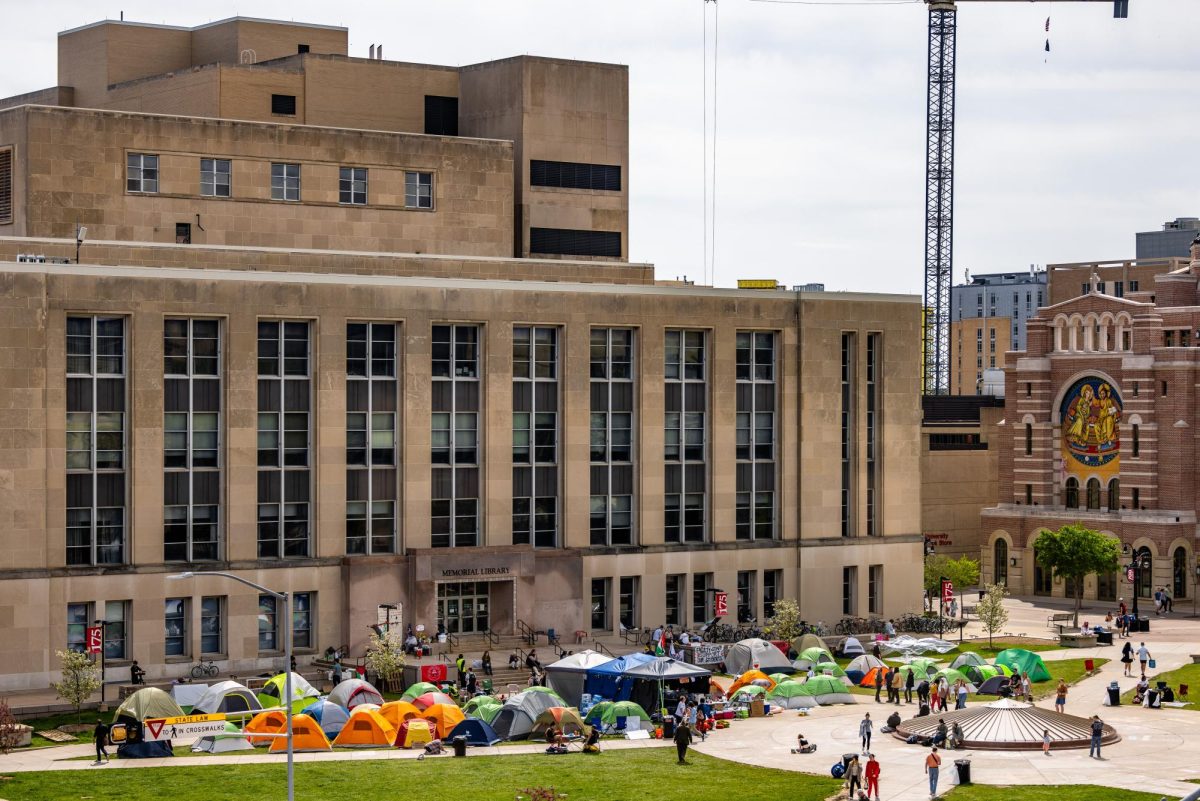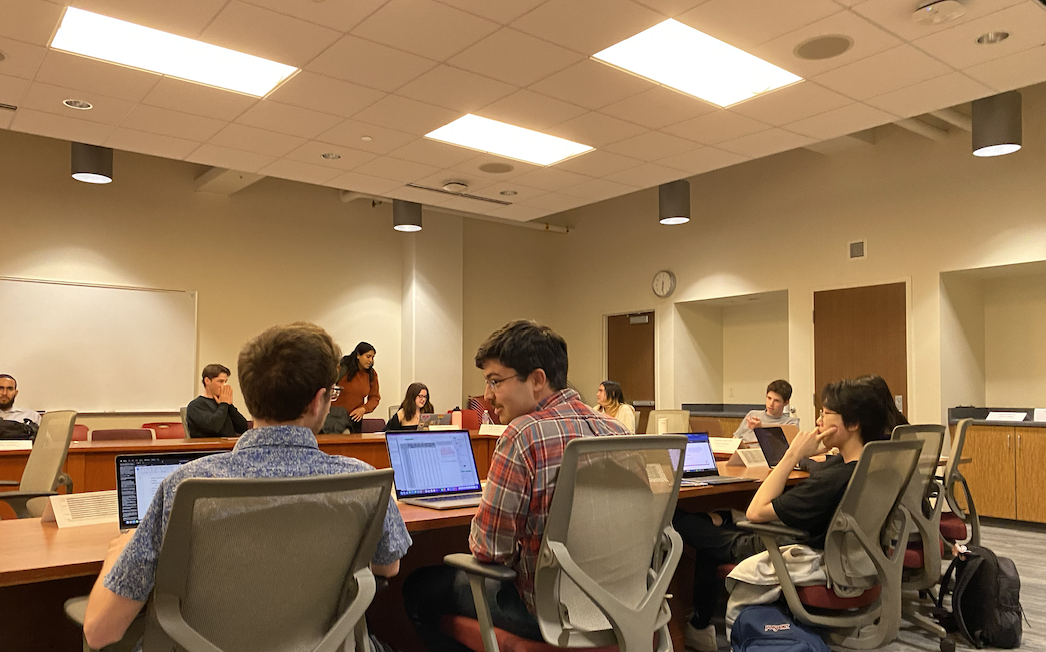[media-credit name=’BEN CLASSON/Herald photo’ align=’alignright’ width=’336′] [/media-credit]
[/media-credit]
At precisely noon Monday, 20 students
gathered at Library Mall and began a full-out slow-motion brawl that
ended with everyone’s death.
After exactly three minutes,
participants simply got up and left as if nothing had happened.
The event was the latest example of a
flash mob, a planned occurrence that has cropped up in cities around
the world over the past four years. Groups perform predetermined
actions for a short amount of time before quickly dispersing.
“I was pleased that
everyone else participating seemed to go with the idea with real
enthusiasm,” said UW senior Zach Heise, a
participant in the flash mob. “I was proud of our small but
dedicated turnout. All participating really seemed focused on putting
on a good, completely random show — the very tenets of a flash
mob.”
Passersby simply watched with
confusion. A few stopped to watch, and others merely whispered to
their friends, unsure of what to do.
“They seemed to be
baffled and were looking around like they were expecting either the
police to break us up or for some sort of ‘candid camera’ setup
to be filming their reactions,” Heise said.
This particular event was coordinated
by senior Jesse Olson.
“I wanted to do this because it
sounded fun,” Olson said. “There were a lot of people who wanted
to have fun this week, and we thought this was a good way. People
began throwing out ideas, so I volunteered to pick a time and place.
It was definitely fun and very different.”
Flash mobs are organized by e-mail
lists, websites, text messages or, the most popular student method,
Facebook. “The Ultimate Madison Flash Mob” Facebook group
provides a means to organize flash mobs, including Tuesday’s event.
“I have some tech
skills and am hoping to even get a listserv set up for flash
mobbers so that people can be mass e-mailed about locations, times,
etc.,” Heise said. “That’s how the huge groups in London and New
York do it.”
The first flash mob occurred in New
York City in 2003 and was organized by Harper’s
Magazine senior editor Bill Wasik via e-mail. A
mob of 200 people flooded a Manhattan Macy’s in search of a “love
rug” for the converted warehouse they claimed to inhabit.
The craze has hit Great Britain, China
and Russia, and flash mobs have become popular at colleges across the
U.S., including Purdue University, Cornell University and the
University of Florida. Tasks preformed by students include pirate
attacks, zombie raids, finger shoot-outs and statue worship.
They have also been used as a form of
activism, including the flash mob that took place in St. Petersburg,
Russia, in 2004 to protest President Vladimir Putin. But even flash
mob protests can be turned into humorous events, as seen in the
“zombie rights” march in Madison last October.
“A while ago, there was a zombie
rights protest flash mob that started at the Capitol and walked down
State Street holding signs, dressed as zombies, promoting zombie
rights,” Olson said. “My brother then created an anti-zombie
rights protest.”
Overall, flash mobs are meant to
surprise and brighten people’s day, according to Olson.
“They are a way to wake people up in
their daily routine,” Olson said. “It disrupts the complacency
and surprises everyone a little.”











